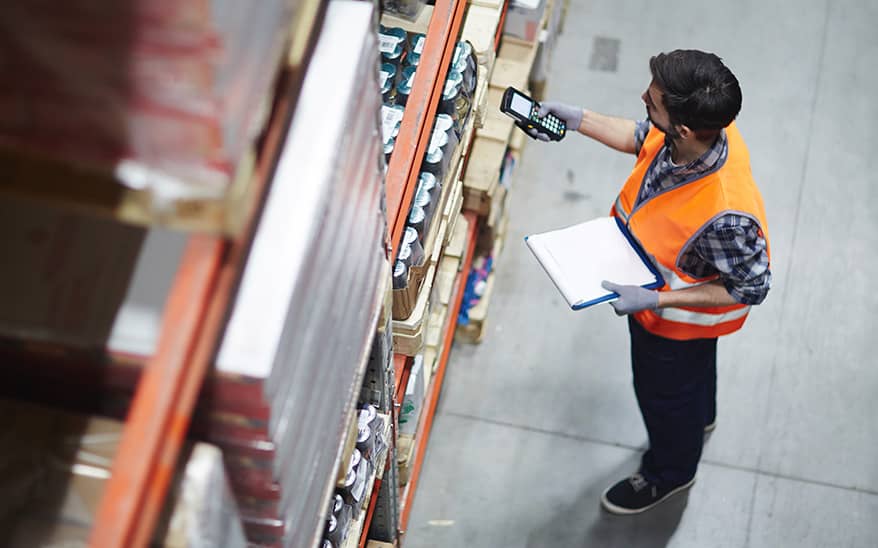Compliance, Traceability And End-to-end Visibility Key To Global Pharma Industry Post-pandemic
- 7 April 2021
- By Manhattan Staff

When functioning properly, globalised supply chains broaden access to critical medicines for billions of individuals all over the world.
While the intricacies of the pharmaceutical supply chain have not always been box-office, headline news, events over the last decade, including the 2010 volcanic eruption in Iceland, the 2013 Ebola outbreak, and more recently, the global COVID-19 pandemic, have shone a spotlight on the pharma industry and the processes and supply chains that under-pin it.
Supply chains are the means by which an organisation transfers its products from development to the marketplace in order to generate a profit. In terms of pharmaceuticals, it covers everything from new product development, through to warehouse storage and the physical transportation of products to the hospital, retail pharmacy or increasingly (with the digitalisation of personal medicine and boom in ecommerce), direct to the patient.
Unlike a fashion brand or grocery retailer however, the regulatory and compliance gears associated with an industry where products can literally make the difference between the life and death of consumers, means that the pharma supply chain, is (rightly) subject to added levels of regulatory scrutiny and regular compliance checks, adding an additional layer of complexity to already multipart supply chains.
The digitisation of pharma
When it comes to pharmaceuticals, tracking (from a compliance perspective) and digitisation (from an operational perspective) reign supreme: the COVID19 crisis has only served to surface and underline the importance of these two areas.
Technology to monitor the integrity and provenance of products, as well as use-by dates has always been a priority within pharma. However, over the last decade, serialisation has become increasingly important as part of a worldwide, industry effort to combat drug counterfeiting.
The impact of the pandemic and added spotlight on ‘trust’ issues around vaccine batches, has greatly accelerated this digitisation imperative and has also driven a strong trend toward supply chain risk monitoring and management – all towards the longer-term goal of operational resilience.
Investment in digital transformation and automation has become only more relevant too, as many companies re-evaluate their supply chain solvency and look to take advantage of technologies, such as the cloud, robotics, automation and the Internet of Things.
These types of technology are increasingly being leveraged to deliver ‘smarter’ products that result in better prescription adherence, more accurate dosing, as well as for new supply chain capabilities, like real-time shipment tracking; ensuring products are delivered on time, while adhering to in-country regulatory conditions.
A great example of this is temperature monitoring technology and tracking software that can now be embedded in transportation management systems (TMS) – an important advance when you consider the growing need for visibility around vaccine distribution and cool storage.
Analytical technologies (including AI and ML applications) that help to derive insight from large and diverse data sets are becoming increasingly popular, making for more efficient and compliant factory, warehouse and transportation management environments.
Furthermore, cloud software platforms can now serve as the backbone of the information supply chain, ensuring that all supply chain participants (manufacturers, 3PLs, distributors etc.) have complete visibility of the entire product journey; providing a clear record of product custody as it moves through each stage of the entire global supply chain process.
Agility and visibility critical to modern, resilient supply chains
The operational silos that have traditionally existed across warehousing, labelling, packaging and transportation operations in many pharma supply chains have historically reduced agility, hampered efficiencies and complicated visibility of the end product.
The flexibility to source new suppliers, inventory holding locations, 3PLs and the agility to make critical decisions with accurate, transparent data is paramount to the paradigm of what a modern pharmaceutical company must be able to provide both today, but maybe more importantly, tomorrow.
Visibility within the pharma supply chain is about knowing your network and supply base, locating bottlenecks, and having the real-time information at your fingertips to know where your products are at any point in the network; from bottling and labelling, to storing and distribution, right through to (in many cases now), doorstep delivery.
As more and more organisations take steps to increase integration across critical operations, leveraging end-to-end tools to ensure continuity of supply, production, distribution, transportation and reverse logistics will be key.
The most successful pharma companies will be those that seize the initiative and build agile, efficient supply chains (either virtual or physical) to support this end-to-end vision of business transparency, recognising along the way that information is the new currency of the future.
For a supply chain partner who can provide your organisation with solutions architected out of the box and configured to adhere your specific regulatory requirements, while offering an end-to-end view of your warehouse and transportation needs at a manufacturing, wholesale distributor and retail level, talk to the team from Manhattan Associates today.




